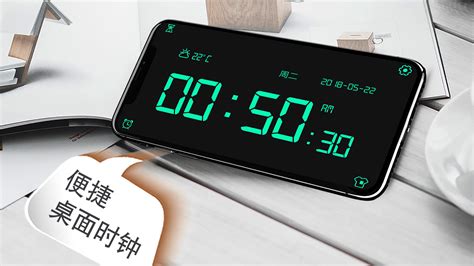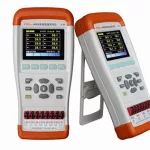用VB编写一个闹钟程序
两个text控件,一个按钮,一个timer控件 ,代码如下: Private Sub Command1_Click() Timer1.Enabled = True Timer1.Interval = 10 End Sub Private Sub Timer1_Timer() If Timer = Text1.Text Then MsgBox Text2.Text, vbInformation, "提醒:" End If End Sub
给我一个vb闹钟的闹钟程序
Option Explicit
Dim AlarmTime ‘申明变量(这个样子定义变量行吗?是什么类型?)
‘将AlarmTime申明为变体型(Variant)
Private Sub Command1_Click()
Call dialog ‘调用dialog子程序
End Sub
Private Sub Form_Load()
Command3.Enabled = False ‘初始化时command3为不可用的
AlarmTime = “” ‘(这样的话不就是当成字符串的形式了么?
‘此时AlarmTime为字符串型(String)
End Sub
Private Sub Command2_Click()
‘AlarmTime = InputBox(“请输入你想设定的时间,例如(19:12:00)”, “小闹钟”).
AlarmTime = InputBox(“请输入你想设定的时间,例如(19:12:00)”, “小闹钟”)
‘此时AlarmTime为字符串型(String)
‘If AlarmTime = “Then Exit Sub”
If AlarmTime = “” Then Exit Sub
If Not IsDate(AlarmTime) Then
MsgBox “你所输入的不是时间格式,请重试!”, , “Wrong”
Else
AlarmTime = CDate(AlarmTime)
‘此时AlarmTime为日期型(Date)
End If
‘判断输入的是否可转换成time格式
‘isdate函数是判断输入的是否可转换成date格式
End Sub
Private Sub Command3_Click()
Call deng
‘调用deng子程序
End Sub
Private Sub Form_Click()
frmabout.Show
‘显示关于对话框
End Sub
Private Sub Form_Resize()
If WindowState = 1 Then
Call mintime
Else
Caption = “小闹钟”
End If
‘如果窗口被最小化,则调用mintime程序
End Sub
Private Sub mintime()
Caption = Format(Time, “long Time”)
‘使用长时间格式来显示时间
End Sub
Private Sub Timer1_Timer()
If lbltime.Caption <> CStr(Time) Then
lbltime.Caption = Time
End If
‘显示时间每秒钟的变化
If Time >= AlarmTime Then
Call deng
End If
‘判断如果现在的时间超过了设定的时间,则调用deng子程序
If WindowState = 1 Then
If Minute(CDate(Caption)) <> Minute(Time) Then
mintime
End If
End If
‘最小化时显示时间每分钟的变化
End Sub
Sub dialog()
CommonDialog1.Flags = cdlCFBoth
CommonDialog1.ShowOpen
Label1.Caption = CommonDialog1.FileName
‘If Label1 <> ” Then
If Label1 <> “” Then
Command3.Enabled = -1
Else
Exit Sub
End If
‘把打开的文件名给于label1
‘如果label1不为空时,则command3即可用
End Sub
Sub deng()
Dim ss
ss = Shell(Label1.Caption, 1)
End
‘启动指定的文件,并且结束小闹钟程序
End Sub
已经添加了注释。你看吧
C语言或C++实现一个简单的闹钟程序
取系统时间和你设定的时间进行比较. ::getcurrenttime()好像是这样的. 弹出窗口提示简单. 声音播放没接触过,在网上找找估计不难的.
c++课程设计闹钟程序
Class CTime { … public: int m_nHour; int m_nMinite; int m_nSecond; } Class Clock { public: void SetTime(CTime time); void UpdateTime(); CTime GetTime(); … private: int m_nHour; int m_nMinite; int m_nSecond; } /* Thinking yourself, and good luck */
请高手帮我写个单片机闹钟程序。
#include
#include
#define uchar unsigned char
#define uint unsigned int
typedef bit by;
sbit rs=P2^6;
sbit rw=P2^5;
sbit lcde=P2^7;
uchar code zf[]={” 2011 may 31 “};
uchar code zf1[]={” 00:00:00 “};
uchar code zf2[]={“123456789 “};
uchar *p=zf,*p1=zf1,*p2=zf2;
uchar i,shi,fen,miao,count;
void delay(uchar m)
{
uchar i;
while(m–)
{
for(i=120;i>0;i–);
}
}
by busy()
{
by t;
rs=0;
rw=1;
lcde=1;
_nop_();
_nop_();
_nop_();
_nop_();
t=(by)(P0&0x80);
_nop_();
_nop_();
lcde=0;
return t;
}
void write_cmd(uchar cmd)
{
while(busy());
rs=0;
rw=0;
P0=cmd;
lcde=0;
delay(5);
lcde=1;
delay(5);
lcde=0;
delay(5);
}
void write_data(uchar dat)
{
while(busy());
rs=1;
rw=0;
P0=dat;
lcde=0;
delay(5);
lcde=1;
delay(5);
lcde=0;
delay(5);
}
void init()
{
write_cmd(0x38);
delay(5);
write_cmd(0x0c);
delay(5);
write_cmd(0x06);
delay(5);
write_cmd(0x01);
delay(5);
write_cmd(0x80);
for(i=0;i<16;i++)
{
write_data(*p++);
delay(5);
}
write_cmd(0x80+0x42);
for(i=0;i<16;i++)
{
write_data(*p1++);
delay(5);
}
EA=1;
ET0=1;
TMOD=0x01;
TH0=(65536-50000)/256;
TL0=(65536-50000)%256;
TR0=1;
}
void write_sfm(uchar add ,uchar dat)
{
uchar sh,ge;
sh=dat/10;
ge=dat%10;
write_cmd(0x80+0x40+add);
write_data(0x30+sh);
write_data(0x30+ge);
}
void main()
{
init();
delay(15);
while(1)
{
if(miao!=0)
{
if(fen!=0)
{
if(shi!=0)
{
write_sfm(3,shi);
}
}
write_sfm(6,fen);
}
write_sfm(9,miao);
}
}
void time() interrupt 1
{
uchar count;
TH0=(65536-50000)/256;
TL0=(65536-50000)%256;
TR0=1;
count++;
if(count==20)
{
count=0;
miao++;
if(miao==60)
{
miao=0;
fen++;
if(fen==60)
{
fen=0;
shi++;
}
}
}
}
求单片机C语言的电子闹钟设计程序 其功能只要有闹钟,一天24小时的时钟功能就行。
你看看行不行
#includeuchar code tab[10]={0x3F,0x06,0x5B,0x4F,0x66,0x6D,0x7D,0x07,0x7F,0x6F} void view() /*七段数码管显示程序 七个管轮流显示*/ {P3=0x01; unsigned int i=0; while(i<6) {n=vnum; P1=tab[n]; P3<<=1; i++; } } void mDelay(unsigned int Delay) /*延时程序*/ { unsigned int i; for(;Delay>0;Delay–) { for(i=0;i<124;i++) {;} } } void jumpnum() /*用于钟表时分秒的进位*/ {if(jnum(5)>9) /*秒进位 {jnum[4]=jnum[4]+1; jnum[5]=0; if(jnum[4]>6) /*秒到分进位 {jnum[3]=jnum[3]+1; jum[4]=0; if(jnum[3]>9) /*分进位 {jnum[2]=jnum[2]+1; jnum[3]=0; if(jnum[2]>6) /*分到时进位 {jnum[1]=jnum[1]+1; jnum[2]=0; if(jnum[1]>9) /*时的进位 {jnum[1]=0; jnum[0]=jnum[0]+1; } else if(jnum[1]>4&&jnum[0]>=2) {jnum[1]=0; jnum[0]=0; } } } } } void key() /*键盘控制程序 {if((P2&0xFF)!=0xFF); /*防抖动 {mDelay(3000); if((P2&0xFF)!=0xFF) {unsign int c; c=1; while(c<4) { if((P2&0xFF)!=0xFF); {mDelay(3000); vnum[]=num[]; void view(); if((P2&0xFF)!=0xFF) {switch(P2): /*判断不同的按键 {case 0xFE: c++; /*c用于判断是闹钟调时c=3还是时钟调时c=2 case oxFD :if(c=2) /*分位增加 {num[3]++;} else if(c=3) {lnum[3]++; } case oxFC :if(c=2) /*时位增加 {num[1]++;} else if(c=3) {lnum[1]++; } } if(c=2) /*增加后判断是否需要进位 {jnum[]=num[]; jumpnum(); vnum[]=num[]; void view[];} if(c=3) {jnum[]=lnum[]; jumpnum(); vnum[]=num[]; void view[];}}}}}}} void clock() /*闹钟程序 {for(cl=0;num[cl]==lnum(cl);cl=cl+1) /*当前时间与设定时间相同 {;} unsigned int kp=0; if(cl==5&&kp==0) /*闹钟铃声 {for(i=1;i<100;i++) {P1_7=~P1_7; for(j=1;i<=100;j++);} void mDelay(3000); for(i=1;i<100;i++) {P1_7=~P1_7; for(j=1;i<=100;j++);} vnum[]=num[]; void view(); if((P2&0xFF)!=0xFF); /*判断是否有按键,有则停止闹钟 {mDelayd(3000) void view(); if((P2&0xFF)!=0xFF) {kp=1;} }}} viod intclock() /*整点报时程序 {unsigned int ic,i; if(num[2]==5&&num[3]==9&&num[4]==5&&num[5]==0) /*判断差十秒整点 {if(ic=num[5]+2;(ic==(num[5]+2))&&num[5]<59;ic=num[5]) /*开始发出500hz声因 {for(i=0;i<100;i++) {P1_7=~P1_7; for(i=0;i<=100;i++) } for(i=1;i<150;i++) /*1000hz声音 {P1_7=~P1_7; for(i=0;i<=50;i++) }}}} void count() inturrupt 1 using 2 /*计时程序 {cn++; if(cn==20) {num[5]++; cn=0; } } void main() { P2=0x00; unsigned int num[5],jnum[5],lnum[5]; ET0=1; EA=1; TR0=1; EX0=1; EX1=1; IT0=1; IT1=1; TMOD=0x01; TH0=0x3C; TL0=0xB0; unsigned int cn=0; P2=0x00; while(1) {void key(); void view(); void jumpnumber(); void clock(); void intclock(); } }
vb闹钟程序的注释
Private Sub Form_Load()
‘显示窗口
Form1.Show
Form1.AutoRedraw = True
‘设定用到的变量
Dim t() As String, th As Integer, tm As Integer, nh As Integer, nm As Integer
‘设定闹钟时间
t1 = InputBox(“设定闹钟时间”, “闹铃设置”, Time)
t = Split(t1, “:”): th = t(0): tm = t(1)
‘当电脑现在时间与设定的闹钟想同时Beep闹钟
Do
DoEvents: Form1.Cls: Print “闹钟时间设定为”; t1: Print “现在时刻为”; Time ‘显示闹钟和当前时间
t = Split(Time, “:”): nh = t(0): nm = t(1)
If th = nh And tm = nm Then MsgBox “Beep Beep…闹钟响了”: Exit Do ‘时间对应时闹响
Loop
End Sub
刚学VB吧?这是我给你写的最简单的闹钟程序了,学习愉快
vb 编写一个闹铃的程序
一、拖一个TEXTBOX到窗体上, 二、拖一个timer到窗体上,并设置好时间. 三、在timer的事件中,判断当前时间与textbox的时间相不相等,相等就执行shell,打开某个文件. 你试试,缺哪一步,再来问吧. 四、如果象楼下那个大哥说的,你要打开一个非执行文件,那就用api函数ShellExecute,也很简单. 当然如果你要画一动画,那就是1楼高人所回答的了,这个复杂,可整不来.
用汇编语言写个闹钟程序
用vb做.在上面放个“钟”,再加上想要的音乐,再简单编辑就ok了.然后打包.打好后运行exe.如果你学过VB就容易了.









